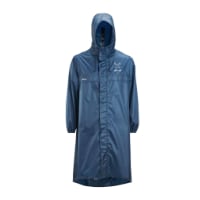Having just completed the
Camino Frances in Finisterre today, here is what worked for me.
-- Before my camino I purchased waterproof low-cut hiking shoes with a wide toe box, and walked about 50 kilometers.
-- I started using a wool liner and sock combination (crew length), but found the separate crew-length socks were too warm -- even in minus 0C temperatures -- and the combination of two socks constricted my toes, defeating the wide toe box of the shoe. My little toes blistered.
So I downloaded the Kindle version of John Vonhof's "Fixing your feet" and followed his advice.
-- I switched to a lightweight Wright Sock, which is a low-cut sock where a liner and sock are made together. This kept my feet cooler and allowed more freedom of movement for me toes.
-- I purchased and began to use Body Glide on the bottom of my feet and between my toes. This helped lubricate my skin, reducing friction.
I also learned to treat blisters, following Vonhof's advice.
-- I learned to tape my toes and heels using KT tape, duct tape, or both to prevent blisters.
Before I left for France, I packed a kit consisting of a needle and matches, alcohol based hand cleanser, KT tape and duct tape, small scissors, Body Glide, Vaseline, zinc oxide cream, and triple antibiotic ointment.
Each morning before I began to walk, I would clean my feet, tape my little toes, apply Vaseline between my toes, and apply Body Glide to my heels and sides of my feet.
My second day, between Roncesvalles and Zubriri, it snowed and rained heavily, and there were very few places to sit out of the rain or snow to care for my feet. I ignored several hotspots on my little toes and heel and they blistered. I drained and treated the blisters that night, and they were pain-free in a few days. I also gave my feet a rest while the blisters heeled by walking in my Crocs -- one day, about 33 kilometers.
Those were the last blisters I got, because from then on I stopped rain or shine to keep my feet clean, dry, cool, and well lubricated. In other words, from then on I gave my feet the respect they deserved.



























